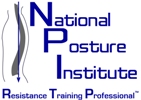Posture is the hidden secret of the health industry. There are many misconceptions about posture. The media focus is primarily on the remedy after the problem  has surfaced instead of the habits that lead to the problem. Habitual behaviors can eventually lead to muscle imbalance and body alignment dysfunction. Posture is critical to the balanced functioning of the musculoskeletal system. Low back pain and cumulative trauma/stress disorders can be caused by consistent poor body alignment. Pain in prominent areas like the low back, neck, shoulders and hips could be avoided or managed better with the proper understanding of good posture as it relates to body alignment. Muscles, fascia and ligaments are impacted by being either stretched, weakened, or strengthened when they should not be. It’s a vicious cycle, but one that can be changed with knowledge and the right application.
has surfaced instead of the habits that lead to the problem. Habitual behaviors can eventually lead to muscle imbalance and body alignment dysfunction. Posture is critical to the balanced functioning of the musculoskeletal system. Low back pain and cumulative trauma/stress disorders can be caused by consistent poor body alignment. Pain in prominent areas like the low back, neck, shoulders and hips could be avoided or managed better with the proper understanding of good posture as it relates to body alignment. Muscles, fascia and ligaments are impacted by being either stretched, weakened, or strengthened when they should not be. It’s a vicious cycle, but one that can be changed with knowledge and the right application.

In looking at the posture of other people, you can probably recognize a very common postural habit where the head is in front of the body, rounded shoulders, slumping back, hollow chest and distended belly. Prominent shoulder blades (also called “chicken wings”) and rounded shoulders usually accompany forward head posture. For optimal alignment, your ear, shoulder, hip ankle should be stacked along a relative plumb line. When your head is constantly pulled forward, the weight of your head pulls on your neck and puts pressure on your spine. In fact, for every inch your head is thrust forward from its natural position on top of your shoulders, there are approximately 10 pounds of pressure on the neck, shoulders and upper back. This additional pressure over time can cause serious tissue damage, headaches, pinched nerves, muscle dysfunction, decreased the range of motion, early spinal degeneration and pain.
Our specialty at RN Therapeutics is a combination of myofascial release, massage, stretching, strengthening, mobilizing and postural re-education to not only eliminate pain but to educate and empower everyone to be able to manage their own particular issues-whether it be structural, soft tissue, muscle imbalance, physical deconditioning or chronic pain
|
|
|


